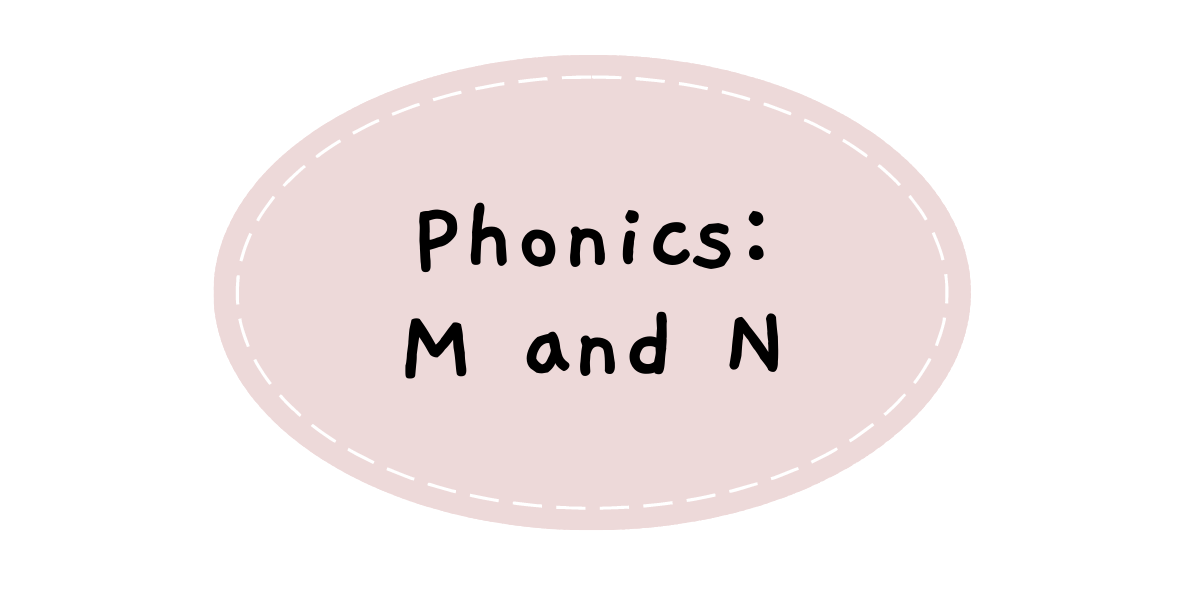The letters “M” and “N” are a little unique in English pronunciation as they are two of the three phonemes in English that are classified as nasal consonants. Both /m/ and /n/ are voiced consonants, where they differ is in their mouth positioning. In this next phonics lesson, we will go over in detail how to pronounce these two important consonants.
If you need any more help with vowels and consonants, check out our Vowels and Consonants Home page for lessons, flashcards, and articles.
Nasal Consonants
Nasal consonants are consonants that are formed through air escaping through your nose and not your mouth. The two nasal consonants we will learn here are /m/ and /n/. The third nasal consonant is labeled as ŋ in IPA, and is usually written as “ng”. We will learn about the third nasal consonant a little later.
How to Pronounce M
In the letter “M”, we are introduced to one of the few nasal consonants in English. A nasal consonant has the air come from our nose, and not from our mouth. An /m/ sound is made by keeping our mouth closed while we vibrate our vocal cords to make a voiced sound. /m/ is a bilabial consonant, so we should have both of our lips active by placing them together.
Teacher’s Tip: Children usually have success in phonics when you can associate the sound we are learning with sounds that they already know. The /m/ sound is often taught in phonics lessons as the sound we make when we see something that we want to eat “mmm”.
The IPA symbol for /m/ is m.
Common words with /m/:
- Mouse
- Monkey
- More
- Some
How to Pronounce N
“N” is the second of three nasal consonants in English pronunciation, and it is very similar to the /m/ sound. Like /m/, /n/ is a voiced consonant starting with your vocal cords and escaping through your nose. The major difference is that /m/ is a bilabial consonant (a sound made with your two lips), and /n/ is an alveolar sound. This means your tongue should be placed on the hard ridge behind your upper teeth. In /n/, your lips should be parted and your tongue should be on that hard ridge behind your top teeth, forming a seal in your mouth to force the air out of your nose. This is a voiced sound, and when done right you should hear and feel those vibrations clearly in the /n/ sound.
Teacher’s Tip: Kids love to say no. Have them practice this sound by really emphasizing the /n/ sound and yelling “no” to silly questions.
The IPA symbol for /n/ is n.
Common words with /n/:
- No
- Nose
- Done
- Not
- Line
Other Vowel and Consonant Lessons That You Might Like
How to Teach Your Child Vowels and Consonants
- Print out our flashcards or make your own. You want to make sure the flashcard has the letter on one side and a picture on the other for your child to associate with the sound.
- Teach the name of the letter and the sound that that letter makes to your child. If you do not feel confident in making the sound correctly yourself, you can use the videos we have provided in our Member’s Section.
- Teach your child the word that is associated with this letter ( A is for apple, /a/ /a/ apple). If possible, have them draw the word it is associated with.
- If your child is old enough, teach them how to write the letter (both the small and big version). Make sure to emphasize the name and the sound that the letter makes while your child is writing.
- Verify with a teacher or native English speaker that your child is making the sound correctly
After Your Child Has Learned This Sound
Once you know your child is making the sounds correctly, you should look to practice phonics as much as possible. Basic phonics are incredibly important, and getting this right now will help your child in the future. Remember that the more one-on-one practice time you can give your children, the better they will be in their English pronunciation. It also does not need to be textbooks and flashcards memorization, here is a list of fun activities you can do to practice with your children. No one knows your child better than you, make English time more fun by pairing it with activities they like to do. Anything from coloring, reading, or more active games will be helpful if they are practicing and thinking about the sounds and letters.
Practicing should continue for a while, but when you want to teach something new, you can begin to look at a different phonics lesson. Links for all of these can be found above. As well, you can check their progress on their English pronunciation with some of our assessment quizzes in our Member’s Section.
I Have More Questions
If you have any more questions about this phonics lesson, practicing these sounds, or where to go from here, we have a couple of resources for you here at The Learner’s Nook.
- Here is a glossary of terms we use in these guides which may help clear up some confusion.
- Here is a diagram of a mouth with labels if you do not understand which part of the mouth should be moving.
- Here you can see a general overview of how to teach phonics to your ESL children which may be what you are looking for.
